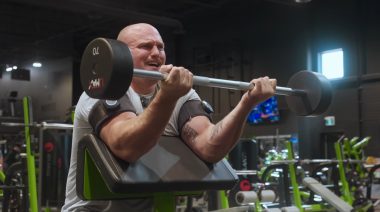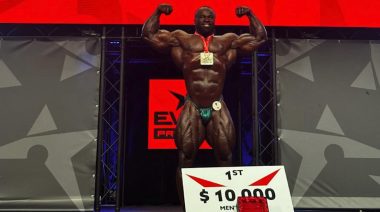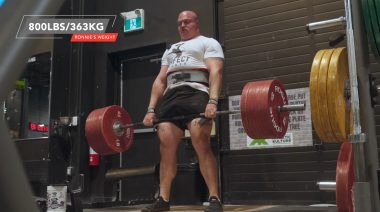Whether you are an athlete, are going to be king of your gym or show natural ability in certain types of physical fitness activities, genetics have been suggested as playing a role in the capacity for greater performance.
Whether you are an athlete, are going to be king of your gym or show natural ability in certain types of physical fitness activities, genetics have been suggested as playing a role in the capacity for greater performance.
A study in Journal of Human Kinetics looked at one particular gene variant, the PPARA Intron 7, also known by its cuddlier name of rs4253778, in Polish, Lithuanian, and Italian male gymnasts to see if this genotype was prevalent in power and strength-oriented athletes.
PPARA is a member of the nuclear steroid hormone receptor superfamily, which is impressive soundling already. It is known to be involved in managing glucose levels and metabolizing, burning up, fats.
I simplify what is probably a really hard job for something that has the nickname rs4253778, but let’s just say that PPARA is involved in making muscles burn fuel efficiently and quickly and is mainly available in tissues with higher mitochondrial rates – liver, heart, kidney, skeletal muscle, and brown fat.
In other words, and according to other reasearch, PPARA is likely to be found in power-athletes because of the short and very intense anaerobic levels of effort they put out.
Suffice, the researchers in this study, figured that if PPARA was more prevalent in their elite-level athlete subjects versus a control group, then it is likely that it is because the genetics play role in why those subjects are elite-level athletes.
Not the only genetic market, mind you, but still, another notch on the old genetic belt for those blessed with the gifts of organic biochemistry.
The results of the study tend towards, yes, if you have a greater concentration of PPARA among a group then, they are likely to be power athletes who need to perform at high intensities for shorter intervals of time.
Some day, genetic testing may be the baseline test that determines who gets pushed into a certain discipline, or gently coaxed, and how they are trained and what they are fed. Until then, some of us will continue to blame our genetics for having to buy drawstring pants.
Summary
Title: Does the PPARA Intron 7 Gene Variant (rs4253778) Influence Performance in Power/Strength-Oriented Athletes? A Case-Control Replication Study in Three Cohorts of European Gymnasts
Date: July, 2021
Abstract: Athletic ability is influenced by several exogenous and endogenous factors including genetic component. Hundreds of gene variants have been proposed as potential genetic markers associated with fitness-related phenotypes as well as elite-level athletic performance. Among others, variants within the PPARA gene that code for the peroxisome proliferator activated receptor α are of potential interest. The main goal of the present study was to determine PPARA (G/C, rs4253778) genotype distribution among a group of Polish, Lithuanian and Italian international level male gymnasts and to compare our findings with those of previous research on the frequency of the PPARA intron 7 C allele/CC genotype in power/strength-oriented athletes. A total of 464 male subjects (147 gymnasts and 317 controls) from Poland (n = 203), Italy (n = 146) and Lithuania (n = 107) participated in the study. No statistically significant differences were found in any of the analyzed cohorts. However, a significantly higher frequency of the CC genotype of the PPARA rs4253778 polymorphism was observed when all gymnasts were pooled and compared with pooled control using a recessive model of inheritance (OR = 3.33, 95% CI = 1.18-10, p = 0.022). It is important to know that we investigated a relatively small sample of male European gymnasts and our results are limited only to male participants. Thus, it is necessary to validate our results in larger cohorts of athletes of different ethnicities and also in female gymnasts to find out whether there is a gender effect.
Main Purpose: The aim of the study was to look at the a sample of Polish, Lithuanian, and Italian international-level male artistic gymnasts to look at the distribution of the PPARA genotype as an indicator of inherent power and strength.
Research Type: Journal Article
Findings Indicate: The PPARA genotype distribution was significant in the gymnasts as compared to pooled control groups.
Limitation: The sample size is small, it is male-only, it is isolated to a small region in Europe, and physiological traits are not influenced by the PPARA gene.






